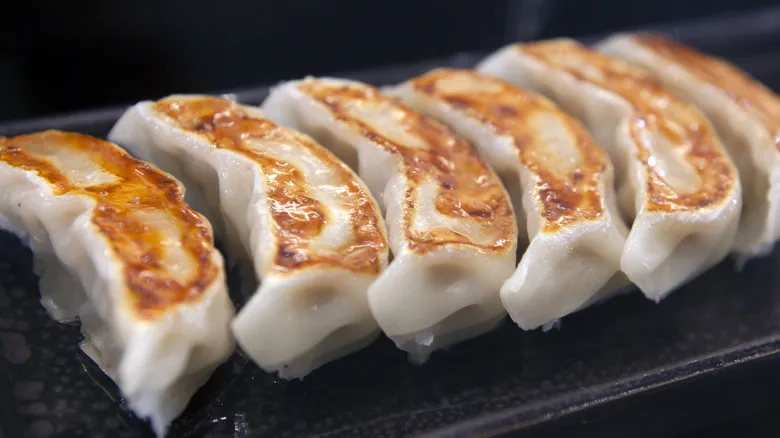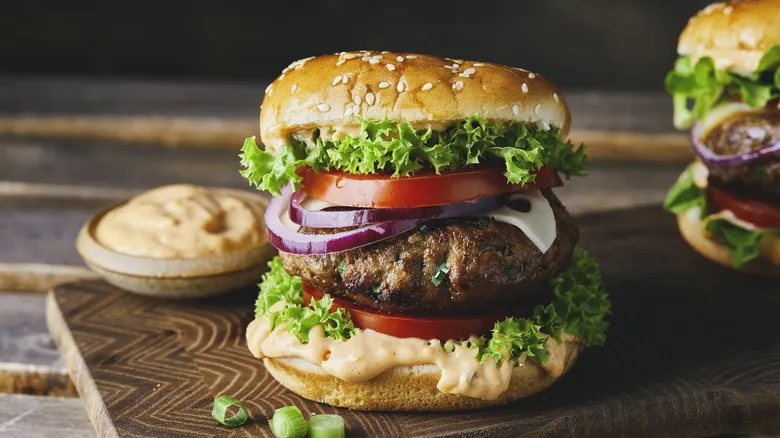What are gyoza?
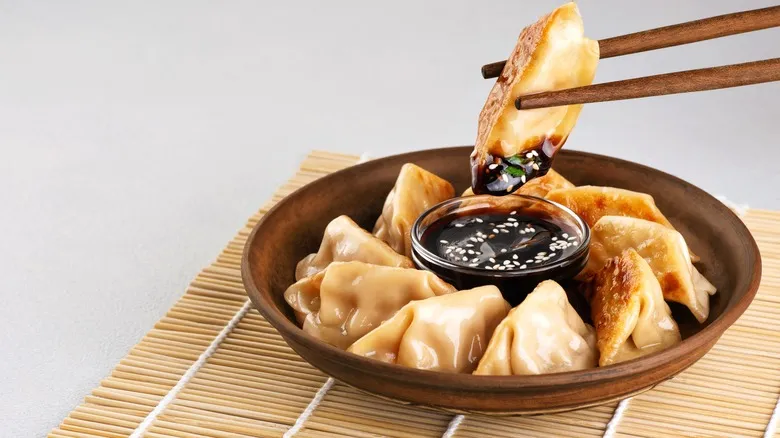
Gyoza, a popular snack or light meal in Japan, are a type of delicious dumpling. There are many variations, but they all feature a soft, wheat-flour-based round wrapper (similar to the exterior of a ravioli) that encases a small amount of filling, typically a blend of seasoned ground meat and chopped vegetables. When preparing gyoza, chefs seal the edges of the wrappers by crimping them and then pleat them to form attractive crescent-shaped dumplings with flat bottoms—most resemble smaller versions of Chinese potstickers often found on dim sum menus.
While gyoza are a staple in Japan, true enthusiasts appreciate them deeply. Gyoza aficionados can discover restaurants that specialize in these savory dumplings. "In Japan, there are small eateries called Gyoza-Ya. 'Ya' translates to place or store," shared restaurateur Pat Kallemeyn.
Additionally, certain regions in Japan have gained recognition as hotspots for exceptional gyoza. "Osaka is renowned for having the best gyoza in the world," noted Isamu Morikizono of Tajima Ramen. Furthermore, food lovers travel to cities like Utsunomiya and Hamamatsu to taste a variety of traditional, regional, and innovative experimental takes on this beloved snack.
How are gyoza made?
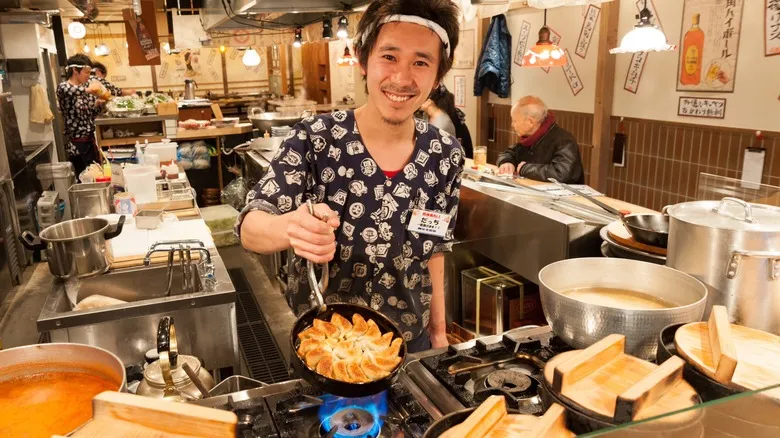
Although gyoza are not particularly difficult to prepare, they require a bit of dedication: each dumpling must be meticulously filled and folded by hand. Therefore, if you intend to make a large batch, it's advisable to set aside a long, peaceful afternoon or enlist the help of a friend or family member. While some chefs opt to create their own wrappers, home cooks can conveniently use store-bought gyoza wrappers.
Creating the traditional filling is quite simple—it consists of a basic blend of meat, vegetables, and seasonings. "Common ingredients in gyoza include ground pork, chopped cabbage, chives, garlic, and, of course, ginger," noted Isamu Morikizono.
To assemble the gyoza, place a teaspoon of filling in the center of each wrapper, moisten the inner edges, and then seal the edges together, creating pleats as you go. For classic gyoza with soft tops and crispy, golden bottoms, chef Jeff Osak recommends his preferred method: "In a shallow sauté pan with a lid over medium heat, add a teaspoon of vegetable oil and place your gyoza (typically six at a time) in the pan," he explained. "As soon as the dumplings start to sizzle, pour in a small teacup (4 ounces) of water and immediately cover with the lid. Be cautious of any oil splatter. Once the water evaporates and the dumplings begin to brown and crisp, they are ready to be served."
Gyoza vs. potstickers
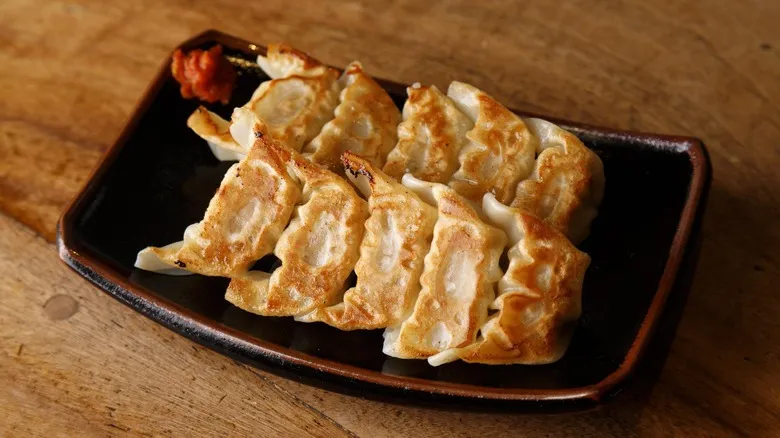
It's no accident that gyoza resemble Chinese potstickers; they are actually a direct descendant of potstickers, brought to Japan by soldiers who developed a fondness for them during their service in China. In fact, the term gyoza is a direct Japanese transliteration of jiaozi, the Mandarin word for "potsticker."
Japanese chefs quickly adapted the dish to their own culinary preferences, and over time, gyoza transformed to cater to local tastes. While traditional gyoza maintain the same shape and crispy bottom as potstickers, they are generally smaller, with more finely minced fillings and thinner, more delicate wrappers. Additionally, some gyoza chefs have taken the dish in innovative directions. For example, in the city of Hamamatsu, a local specialty features gyoza topped with bean sprouts. And for those seeking something different from the classic fillings, there are newer variations filled with ingredients like cheese or shiso leaves.
What do gyoza taste like?
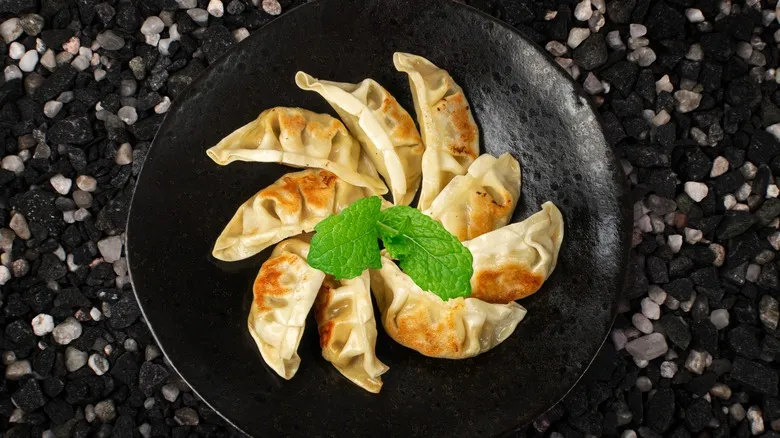
If you're acquainted with Chinese potstickers or similar steamed or boiled dumplings, you likely have a solid understanding of the flavor of traditional gyoza: a delicate, mild, pasta-like wrapper encasing a few bites of juicy, meaty filling infused with finely chopped cabbage and typical East Asian seasonings like chives, sesame oil, and ginger. Much like potstickers, pan-fried gyoza provide a delightful combination of textures in each bite: the smooth wrapper, firm yet moist filling, and crispy, golden-brown bottom. It's no wonder they are so cherished by Japanese diners.
However, this description only scratches the surface of the various types of gyoza. While they all share the same basic pleated shape, their fillings and flavor profiles can differ significantly. Pork is the most commonly used meat in gyoza fillings, but there are also variations featuring beef, shrimp, and chicken, each offering its own unique taste. Vegetarians can savor gyoza filled with mushrooms or a blend of tofu and chopped vegetables. In essence, a well-made gyoza can be filled with just about anything, resulting in a wide range of flavors.
How to serve gyoza
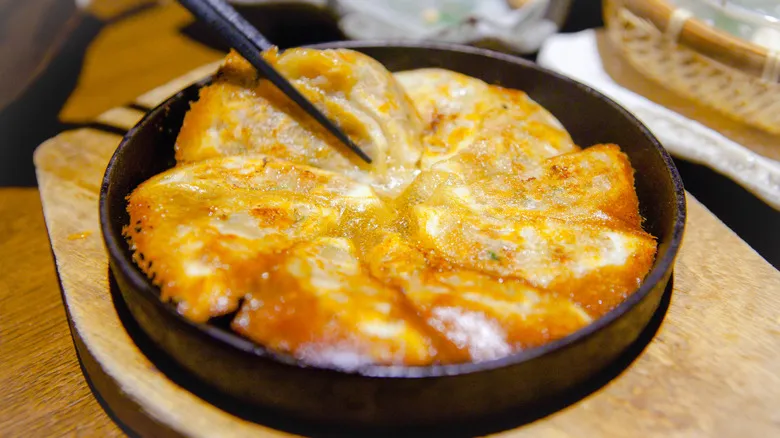
When you order gyoza at a traditional Japanese restaurant, you can expect a serving of six dumplings—perfect for sharing as an appetizer or enjoying as a light meal. Typically, you'll find bottles of soy sauce, vinegar, and chili oil on the table, or they will be provided upon your order. These condiments are essential for creating the dipping sauce that pairs with gyoza, and it's customary for diners to mix their own to achieve their desired flavor balance (a common ratio is equal parts vinegar and soy sauce, with chili oil added to taste). All three of our experts—Jeff Osaka, Isamu Morikizono, and Pat Kallemeyn—agree that this sauce is essential when serving gyoza.
To fully appreciate gyoza as part of a larger meal, it's wise to select dishes that enhance the dumplings' flavor. The best pairings will vary based on the type of gyoza you choose. Pork-filled gyoza, the most traditional and widely enjoyed variety, are often served alongside ramen in ramen shops. Chicken-filled gyoza are typically deep-fried rather than pan-fried, making lighter vegetable side dishes a great contrast to their richness. Meanwhile, beef-stuffed gyoza, known for their hearty and savory profile, pair well with plain rice and miso soup.
Where to buy gyoza
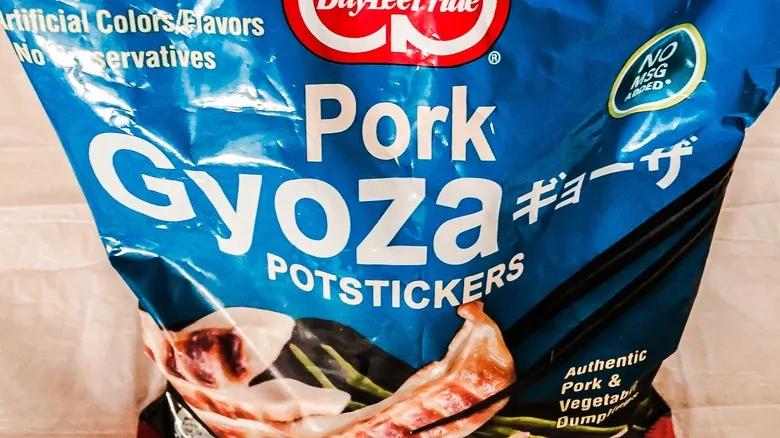
If you visit Japan, you'll easily come across gyoza. They are not only available at specialized gyoza restaurants but also at Chinese and ramen eateries. You don’t even need to dine in; Japanese convenience stores, famous for their selection of hot and cold prepared foods, offer gyoza for takeout.
In the U.S., gyoza are also readily available. They are a staple on the menus of Japanese restaurants, and there are even places dedicated to crafting exceptional gyoza. Jeff Osaka, in addition to his own establishments, highlighted a personal favorite: "There's a spot in L.A. called Gyoza Bar. It's small and often crowded, but they make their own dough for the wrappers in addition to the fillings," he mentioned.
If you're interested in making gyoza at home, you can find premade gyoza wrappers at Asian grocery stores. For a more convenient option, frozen gyoza are more accessible than you might think. In addition to the diverse selection of frozen dumplings available at Asian markets, you can also find frozen gyoza at mainstream grocery stores like Target.
Nutritional value of gyoza
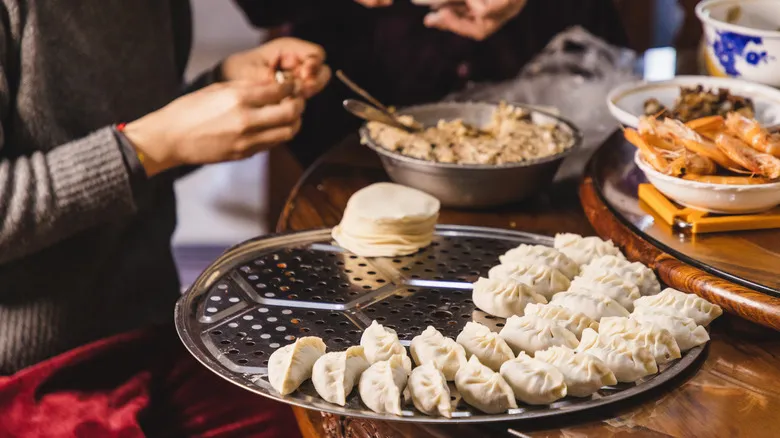
For their enthusiasts, gyoza represent one of the most comforting and satisfying foods available — and many would agree that the world seems much brighter after savoring a plate of these dumplings. However, if you're in search of a single-dish meal that provides balanced nutrition, you might want to consider alternatives to gyoza. While there’s nothing particularly concerning about their nutritional content, they do not constitute a well-rounded meal.
For example, a serving of six frozen pork and chicken gyoza contains 250 calories and accounts for 20% of the recommended daily sodium intake. Although the filling includes a significant amount of vegetables (with cabbage often listed as the primary ingredient), these six dumplings offer minimal fiber and lack sufficient vitamins to be noted in the nutritional breakdown. Additionally, despite their savory taste, they provide relatively low protein content, with only 8.6 grams per serving. Generally, it is advised that sedentary adults consume 0.8 grams of protein per kilogram of body weight each day; thus, a person weighing 165 pounds would require around 60 grams of protein daily. So, while you can indulge in your gyoza, consider ordering some vegetables on the side and plan for a more protein-rich meal in the near future.
Varieties of gyoza
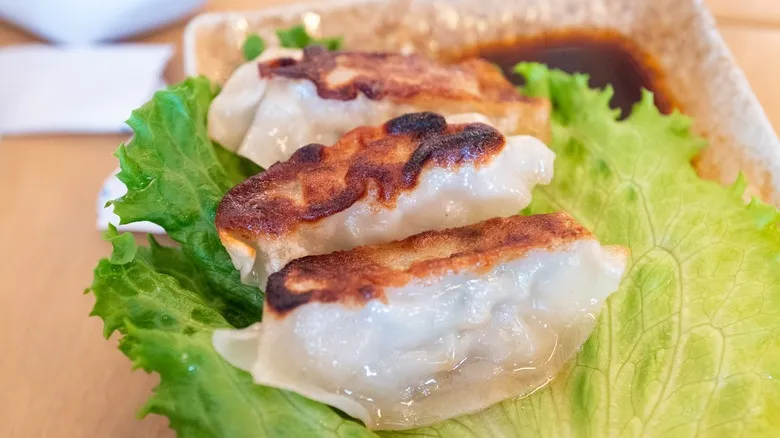
Enthusiasts of traditional gyoza know precisely what to expect when they order: a plate featuring six dumplings with crispy bottoms, elegantly pleated edges, and succulent fillings infused with ginger, garlic, and chives. A drizzle of soy-vinegar dipping sauce completes the experience, creating a truly satisfying meal. However, as Japanese chefs adapted Chinese potstickers to suit their tastes, they introduced a variety of innovative versions—some of which have become beloved classics in their own right.
In addition to the classic pan-fried gyoza, eateries also serve crunchy deep-fried options and simple boiled dumplings, often presented in a light broth similar to wontons. The fillings can also vary widely, incorporating different meats, seafood, and even entirely vegan choices. Some chefs have taken gyoza as a canvas for creative experimentation with surprising flavors. "Contemporary fillings include kimchi, edamame, and interpretations of other cuisines like Vietnamese pho or Chinese soup dumplings," noted Jeff Osaka.
Other creative variations feature gyoza served in ramen broth, gyoza cooked in egg and topped with cheese, and gyoza with a delicate, crispy skirt made simply from water and flour on the bottom.
How to store gyoza
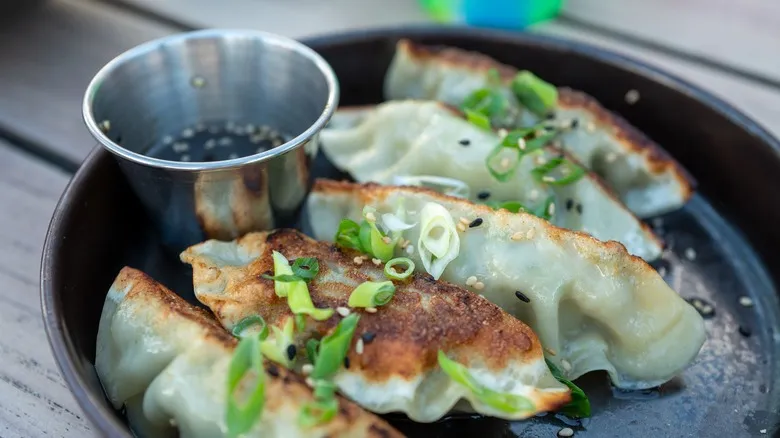
Gyoza are incredibly delicious and typically served in small portions, so you probably won’t have to worry about leftovers from a restaurant. However, if you’re preparing them at home, it’s wise to make a larger batch so you can store and enjoy them later. Regardless of the quantity, making gyoza is a labor-intensive process, so it’s best to maximize your effort for future convenience.
Once you’ve diligently mixed your filling and skillfully filled and folded your homemade gyoza, what should you do next? You’ll need to store any that you don’t intend to cook and eat immediately. If you plan to consume all your gyoza within the next few days, you can cook them all at once and refrigerate any leftovers. To keep them fresh and maintain their texture, allow them to cool before placing them in a single layer in a parchment-lined container. Seal the container and store it in the fridge. Avoid stacking the gyoza or letting them touch, as they may stick together, and try not to keep them for more than a couple of days. For longer storage, lightly dust uncooked gyoza with flour, arrange them on a parchment-lined baking sheet (ensuring they don’t touch), and freeze. Once they are fully frozen, transfer them to a ziplock bag or a sealed container for extended storage.
Non-traditional ways to enjoy gyoza

Delicious dishes are perfect for adaptations and variations, and gyoza are no exception. Since their introduction from China, Japan has seen a plethora of fillings and cooking methods for gyoza, and chefs worldwide have realized that a bag of frozen gyoza can serve as the foundation for countless inventive and delightful new meals.
For example, they can replace traditional proteins like chicken and pork in a Japanese-style rice bowl, enhanced with mirin and soy sauce, and topped with a soft-cooked egg. Gyoza can also be combined with a Korean-style garlicky chili sauce and sautéed vegetables. Alternatively, you can treat them like ravioli, dressing them with Alfredo or tomato sauce and cheese. For a lighter, fresher option, toss them with a spicy cabbage slaw or mix them into a salad featuring tomatoes, fresh greens, and a chili crisp vinaigrette. In summary, with a bag of frozen gyoza on hand, the possibilities are endless.
Gyoza are a fairly recent addition to Japanese cuisine
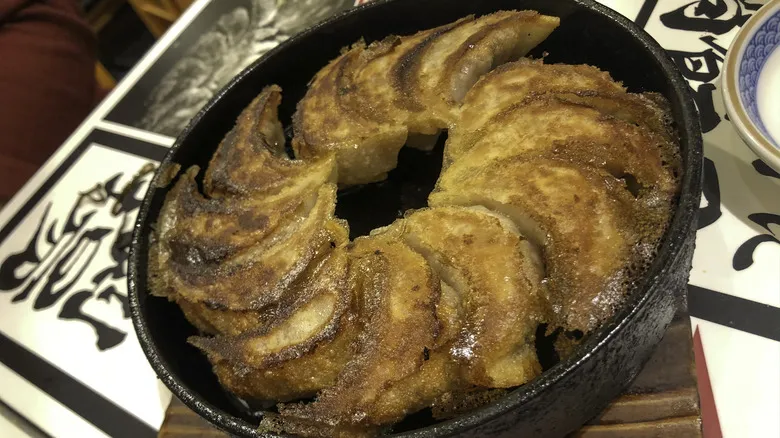
Gyoza are so cherished and ingrained in Japanese culinary culture that one might think they've always been a part of Japanese life. However, they are actually a modern import that has captivated the nation. Potstickers have a long-standing history in Chinese cuisine and are particularly favored during Lunar New Year festivities, as they are believed to bring good fortune. Yet, they only made their way to Japan after World War II, when Japanese soldiers, having been stationed in Northern China, introduced the dish to their fellow countrymen.
Since that time, Japanese chefs have refined and modified the original Chinese recipe. The innovation doesn't stop there; even today, they continue to create new gyoza variations, experimenting with different sizes, fillings, sauces, and even wrapper colors. Thus, while gyoza may be a relatively recent addition to Japanese food culture, they have undoubtedly established themselves as a beloved staple.
Recommended

The Fascinating History Of Airplane Food
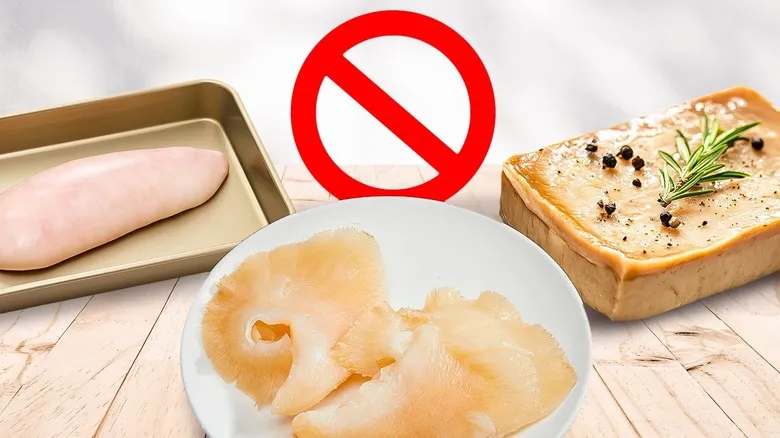
13 Meats People Used To Eat, But Are Now Illegal In The US
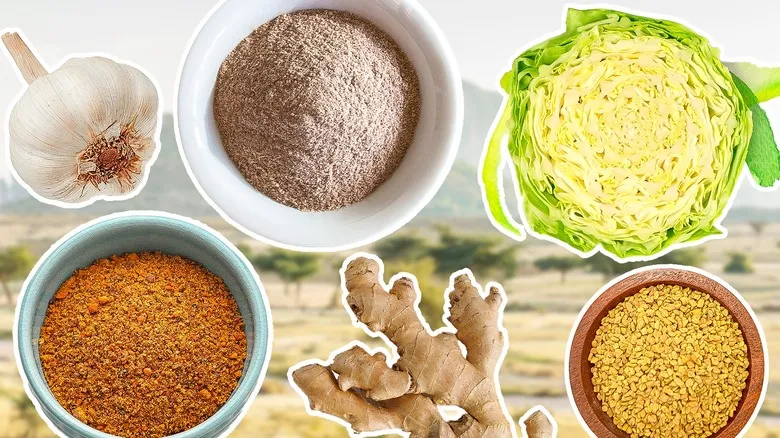
13 Essential Ingredients You Need To Make Great Ethiopian Food

Why Kinder Surprise Eggs Are Illegal In The United States
Next up

